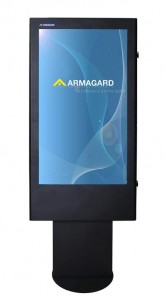Most people will be aware of advertising screens, often seen around shopping malls, airports, gas stations, pharmacies and in other retail locations. Commonly referred to (mainly by the industry involved although not its customers) as digital signage, these screens are rapidly replacing static posters and advertisements traditionally used for out of home advertising.
The digital signage displays vary in size, shape and complexity, but essentially they all boil down to a basic concept: an LCD screen (or plasma) that plays advertising, promotions, branding or marketing content.
Benefits of an LCD Ad Player
Understanding the benefits of using a screen for retail promotion is dependent on what you want to achieve with it. Some retailers use LCD ad players to draw customers into a store, the bright, vivid and moving imagery often more effective than static signs and printed posters (although as with any advertising, WHAT you play will make a big difference).
For chain stores, a common problem with static signage and printed posters is ensuring all campaigns and adverts remain consistent, some stores, due to delivery or staffing problems may take several days to fit their store with the relevant media, but with an LCD ad player this problem is eliminated as content can be uploaded centrally and remotely, and in real time.
Furthermore, unlike static imagery, with an LCD ad player, content can be changed to meet specific needs throughout the day; coffee shops, cafes, diners and restaurants can promote breakfast menus in the morning then change to lunch promotions in the afternoon, for example.
Another reason many retailers look to an LCD advertisings screen is aesthetics. Even the most elegantly designed print poster loses out on looks when it comes to a modern LCD ad player. And with such a variety of shapes and sizes, from digital posters, floor-standing ad players, totems and kiosks, retailers can find something that suits both their image and size/space needs.
Cost savings can also be made with advertising screens, particularly for chain stores, despite the initial costs of hardware and content creation, as over time, when you consider the savings in print costs, logistics and man-hours, savings can soon amount to a significant amount.

Comments are closed.